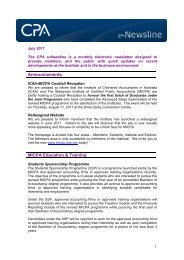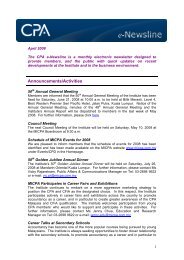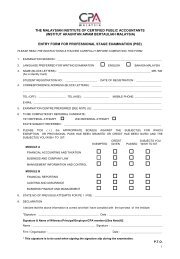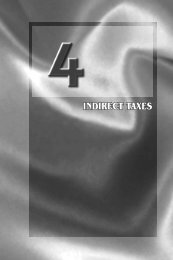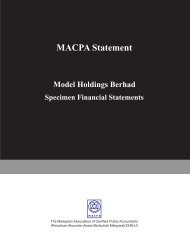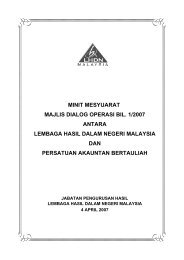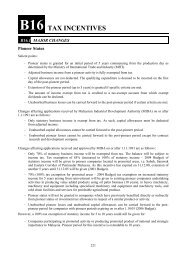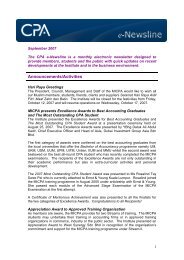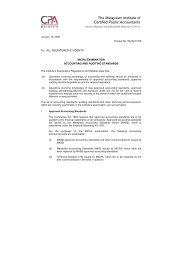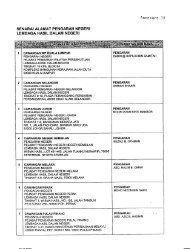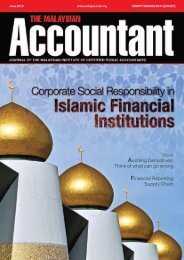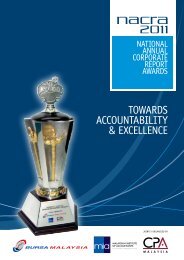Identifying and Assessing the Risks of Material Misstatement ...
Identifying and Assessing the Risks of Material Misstatement ...
Identifying and Assessing the Risks of Material Misstatement ...
You also want an ePaper? Increase the reach of your titles
YUMPU automatically turns print PDFs into web optimized ePapers that Google loves.
ISA 315 (REVISED), IDENTIFYING AND ASSESSING THE RISKS OF MATERIAL MISSTATEMENTTHROUGH UNDERSTANDING THE ENTITY AND ITS ENVIRONMENTReports prepared by management (such as quarterly management reports <strong>and</strong> interimfinancial statements) <strong>and</strong> those charged with governance (such as minutes <strong>of</strong> board <strong>of</strong>directors’ meetings).The entity’s premises <strong>and</strong> plant facilities.Information Obtained in Prior Periods (Ref: Para. 9)A19. The auditor’s previous experience with <strong>the</strong> entity <strong>and</strong> audit procedures performed in previous auditsmay provide <strong>the</strong> auditor with information about such matters as:Past misstatements <strong>and</strong> whe<strong>the</strong>r <strong>the</strong>y were corrected on a timely basis.The nature <strong>of</strong> <strong>the</strong> entity <strong>and</strong> its environment, <strong>and</strong> <strong>the</strong> entity’s internal control (includingdeficiencies in internal control).Significant changes that <strong>the</strong> entity or its operations may have undergone since <strong>the</strong> priorfinancial period, which may assist <strong>the</strong> auditor in gaining a sufficient underst<strong>and</strong>ing <strong>of</strong> <strong>the</strong>entity to identify <strong>and</strong> assess risks <strong>of</strong> material misstatement.A20. The auditor is required to determine whe<strong>the</strong>r information obtained in prior periods remains relevant,if <strong>the</strong> auditor intends to use that information for <strong>the</strong> purposes <strong>of</strong> <strong>the</strong> current audit. This is becausechanges in <strong>the</strong> control environment, for example, may affect <strong>the</strong> relevance <strong>of</strong> information obtainedin <strong>the</strong> prior year. To determine whe<strong>the</strong>r changes have occurred that may affect <strong>the</strong> relevance <strong>of</strong>such information, <strong>the</strong> auditor may make inquiries <strong>and</strong> perform o<strong>the</strong>r appropriate audit procedures,such as walk-throughs <strong>of</strong> relevant systems.Discussion among <strong>the</strong> Engagement Team (Ref: Para. 10)A21. The discussion among <strong>the</strong> engagement team about <strong>the</strong> susceptibility <strong>of</strong> <strong>the</strong> entity’s financialstatements to material misstatement:Provides an opportunity for more experienced engagement team members, including <strong>the</strong>engagement partner, to share <strong>the</strong>ir insights based on <strong>the</strong>ir knowledge <strong>of</strong> <strong>the</strong> entity.Allows <strong>the</strong> engagement team members to exchange information about <strong>the</strong> business risks towhich <strong>the</strong> entity is subject <strong>and</strong> about how <strong>and</strong> where <strong>the</strong> financial statements might besusceptible to material misstatement due to fraud or error.Assists <strong>the</strong> engagement team members to gain a better underst<strong>and</strong>ing <strong>of</strong> <strong>the</strong> potential formaterial misstatement <strong>of</strong> <strong>the</strong> financial statements in <strong>the</strong> specific areas assigned to <strong>the</strong>m, <strong>and</strong>to underst<strong>and</strong> how <strong>the</strong> results <strong>of</strong> <strong>the</strong> audit procedures that <strong>the</strong>y perform may affect o<strong>the</strong>raspects <strong>of</strong> <strong>the</strong> audit including <strong>the</strong> decisions about <strong>the</strong> nature, timing <strong>and</strong> extent <strong>of</strong> fur<strong>the</strong>raudit procedures.Provides a basis upon which engagement team members communicate <strong>and</strong> share newinformation obtained throughout <strong>the</strong> audit that may affect <strong>the</strong> assessment <strong>of</strong> risks <strong>of</strong> materialmisstatement or <strong>the</strong> audit procedures performed to address <strong>the</strong>se risks.ISA 240 provides fur<strong>the</strong>r requirements <strong>and</strong> guidance in relation to <strong>the</strong> discussion among <strong>the</strong>engagement team about <strong>the</strong> risks <strong>of</strong> fraud. 88ISA 240, paragraph 1514



